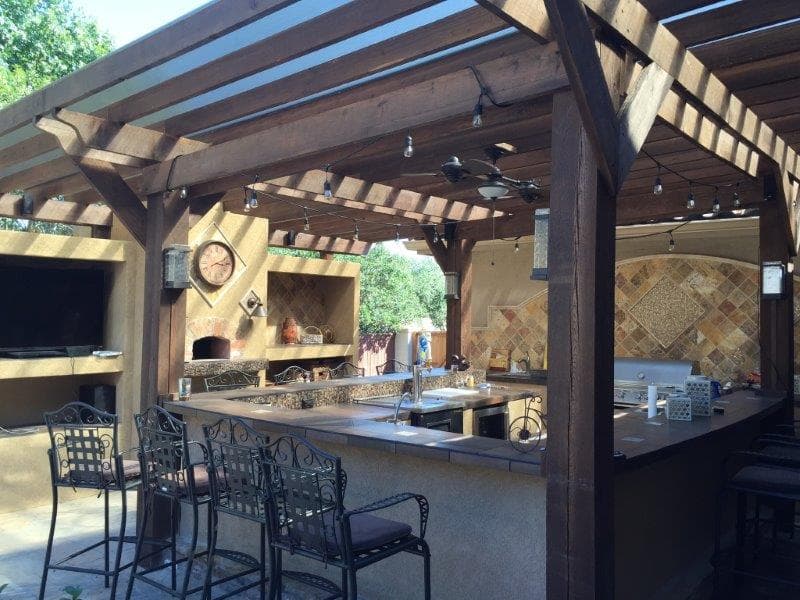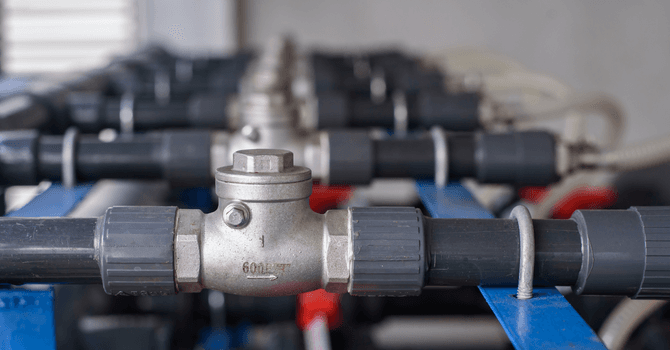
The windows of your home have a multitude of uses: they allow for an excellent view, give access to a cool breeze on warm or stuffy summer days as well as block out the chilly air during winter months. However, even when your windows are closed, one of the main ways that air can escape out into the world is through the small spaces between the window frame, glass and walls.
This escaping air leads to an increase in energy consumption and thus, higher heating and cooling bills. But what if the windows of your home could become a source of heating itself? This is the technology behind heated glass.
Heated glass can be used as a heat source for your entire home, utilizing the electricity in your home to produce radiant heat to keep yourself, friends and loved ones warm. This technologically-enhanced glass can be used throughout the home, but you’re probably wondering if it’s a worthwhile option, as well as the ins and outs of how it works exactly. If you’re intrigued, read on to find out more information on heated windows.
Here's everything you need to know about heated windows!
How do heated windows work?
Heated glass or windows are manufactured to transform heat loss into heat gain, but how exactly does this happen? This technology works by turning the inner layer of a double-glazed pane into a transparent heating element. This inner pane has a metal oxide coating that is invisible to the human eye, as it is incredibly thin.
The coating works by creating a form of electrical resistance that disperses heat equally, thus making a uniform heat source. The outer pane of glass also has an invisible coating which works by reflecting heat inside, while blocking the cold from making its way in. During summer months, the coating on this pane reflects the heat and UV rays away from the home.
Further, there is a non-toxic, but insulating gas placed between the two panes which helps to stop any window air leakage. Lastly, both pieces of glass are tempered glass, also known as safety glass, and this type of glass is incredibly durable, up to 5 times stronger than your average glass window.
Since this glass works with electrical wiring that is concealed by the window frame and walls of your home, any breakage of glass could be dangerous. However, as the glass has been tempered, any cracks in the pane will be easily identifiable, as the glass will fracture into distinct pieces as well as rupture the electrical activity of the glass. This will protect both your home and your loved ones from harm.
Advantages of Heated Windows

source: Pixabay
There are many advantages to adopting heated glass windows for your home. Most manufacturers claim that using heated glass will eliminate hot and cold pockets in your house, which are often created by the average air conditioning or heating systems. This is because the technology behind heated glass allows for heat to be dispersed evenly throughout the rooms of your home.
Not only will using heated glass eliminate hot and cold sections, but these windows also utilize a small amount of energy to maintain a comfortable temperature within a room, using up to 35% less energy to heat a home. Therefore, this technology is cost-efficient. Most manufacturers claim that heated windows are environmentally friendly, as alongside using a small amount of energy, no toxic fumes or chemicals are released into the environment.
If you are looking for a well-rounded environmentally-friendly heating system, the glass can be hooked up to solar panels rather than your home electrical system. The system harnesses and mimics the warmth from the sun, and the type of heat it creates is comfortable while working to reduce your carbon footprint. Also, during warmer months, heated windows block out the sun's heat, therefore working year-round to control the temperature of your home.
Further, heated windows can be connected to your home security system, thereby creating an invisible protective shield. In the case of someone attempting to break into your home, if the outer pane of glass is fractured, this will trigger the alarm and alert the police. As we mentioned, the glass used in a heated glass system is incredibly durable, and will likely be very difficult to break by the human alone.
Where are heated windows best used?
Heated windows are best used in places where elevated levels of condensation, as well as frost, could occur, as this system will help to keep large elevations of glass condensation-free. Manufacturers recommend that if you’re adopting this system, you should be looking to cover at least 20% of the area with heated glass, as you will be sure to obtain the best results with this technology.
Get 3 quotes for your heated window renovation project
RenoQuotes.com can help you get quotes for your heated window renovation project. By submitting your project, we’ll put you in contact with top-rated contractors. Fill in the form on the homepage (it only takes a few minutes), and you will get estimates from trusted professionals.
Dial 1-844 828-1588 to speak with one of our customer service representatives.
Looking for something else?
Related articles
The latest industry news, interviews, technologies, and resources.

Équipe éditoriale
•07 Nov 2023
As the weather outdoors begins to warm up, there’s not much we’re thinking about other than finding ways to spend time outside. Maybe this is the year you’re finally going to build and install an outdoor kitchen in your backyard! When it comes to designing an outdoor space, functionality, practicality, and personality are very important traits. In the project planning process, be certain to keep your lifestyle in mind as you’ll be more likely to make use of the space if it works in accordance with your wants and needs.
Editorial Team
•03 Nov 2025
When it comes to the bathroom, the shower is an integral piece. As it’s central to day-to-day activities, it can help to define the layout of the space as well as the ambiance.

Cynthia Pigeon
•29 Feb 2024
By adding a bit of greenery to your roof, you’re allowing nature to take back its course, to return where it was once unwelcomed.

Editorial Team
•07 Nov 2023
Do you remember that famous old folktale your grandparents would tell you about, the one that probably made it hard for you to comfortably use the toilet without first looking in the bowl, on the off chance that a sewer rat was just wading in there, ready to nip your behind?

Editorial Team
•24 Sep 2024
Do you live in a rural area or have a summer home that isn't connected to a local water system? If so, you probably have a functioning septic system. How can you make sure your conventional on-site disposal system is working properly? What are the best practices to uphold to extend the service life of your sanitary installation and prevent damages? The key to a system's longevity is understanding its inner workings, whether your property is equipped with a conventional or non-conventional system.